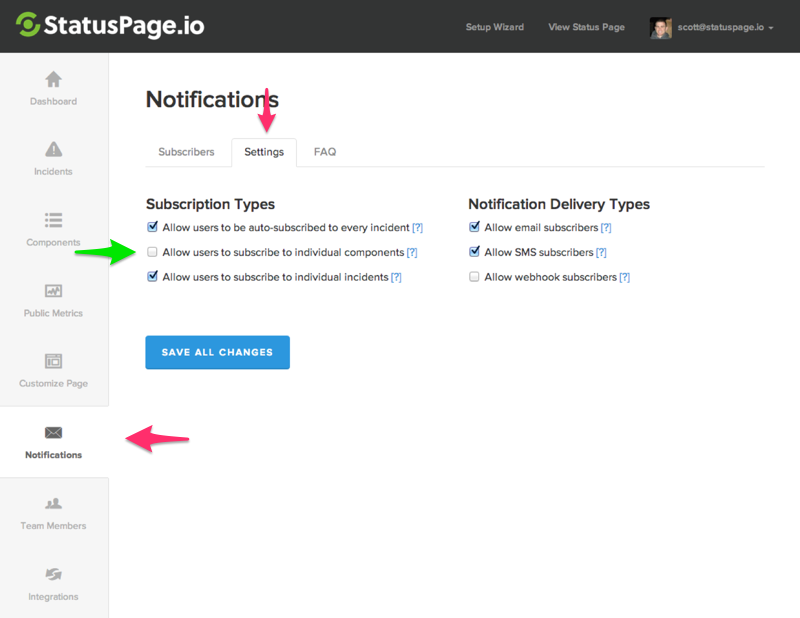Since launching the first version of StatusPage two years ago, every page has come with an incident history page built in. The history page allows end users to scan through past incidents, giving them a sense of overall company transparency, incident severity levels, and incident frequency. While the current history page does a good job of showcasing a company's transparency, we received several requests from customers to let end users filter through the history based on component(s).
Finding The Right Information Using Incident Filtering
Today, we're launching Incident Filtering for all Business customers so that finding incident history based on relevant components is a breeze. Instead of scrolling through the whole incident history list, end users can now pick and choose the history that they care to see. As an example, a typical business user of a product may only need to view incidents affecting a dashboard or portal, while an API user may only care to filter for incidents affecting an API.

Getting Started
Enable Component Subscriptions
To get started, you'll first need to enable Component Subscriptions within the management portal.

Associate Incidents with Components
With Component Subscriptions enabled, you'll now be able to associate incidents with whichever component(s) are affected during an outage.

Filter based on component
By choosing which components are affected by an incident, we'll be able to notify the right subscribers and also let end users filter through your page's incident history.

Shoot us a note at hi@statuspage.io if you have any questions or feedback!